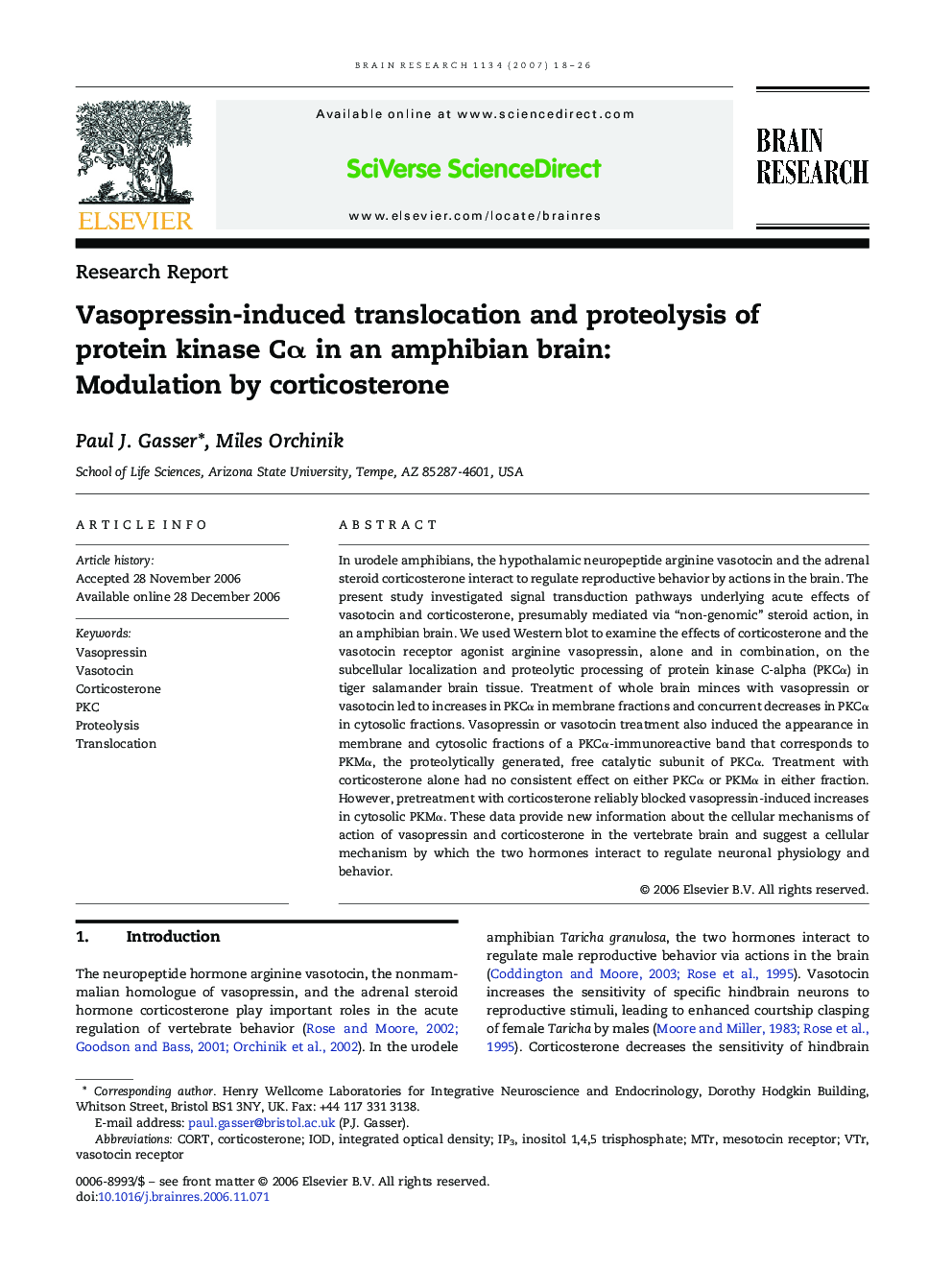| Article ID | Journal | Published Year | Pages | File Type |
|---|---|---|---|---|
| 4331580 | Brain Research | 2007 | 9 Pages |
In urodele amphibians, the hypothalamic neuropeptide arginine vasotocin and the adrenal steroid corticosterone interact to regulate reproductive behavior by actions in the brain. The present study investigated signal transduction pathways underlying acute effects of vasotocin and corticosterone, presumably mediated via “non-genomic” steroid action, in an amphibian brain. We used Western blot to examine the effects of corticosterone and the vasotocin receptor agonist arginine vasopressin, alone and in combination, on the subcellular localization and proteolytic processing of protein kinase C-alpha (PKCα) in tiger salamander brain tissue. Treatment of whole brain minces with vasopressin or vasotocin led to increases in PKCα in membrane fractions and concurrent decreases in PKCα in cytosolic fractions. Vasopressin or vasotocin treatment also induced the appearance in membrane and cytosolic fractions of a PKCα-immunoreactive band that corresponds to PKMα, the proteolytically generated, free catalytic subunit of PKCα. Treatment with corticosterone alone had no consistent effect on either PKCα or PKMα in either fraction. However, pretreatment with corticosterone reliably blocked vasopressin-induced increases in cytosolic PKMα. These data provide new information about the cellular mechanisms of action of vasopressin and corticosterone in the vertebrate brain and suggest a cellular mechanism by which the two hormones interact to regulate neuronal physiology and behavior.
